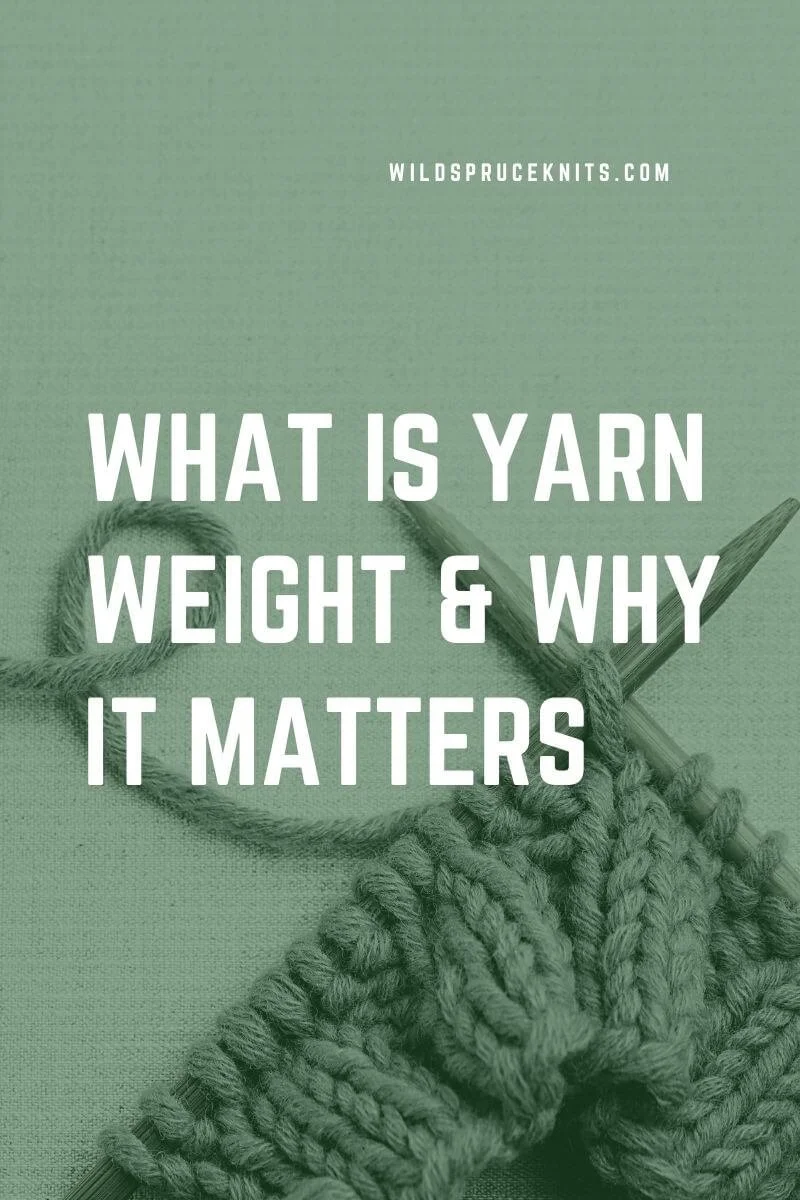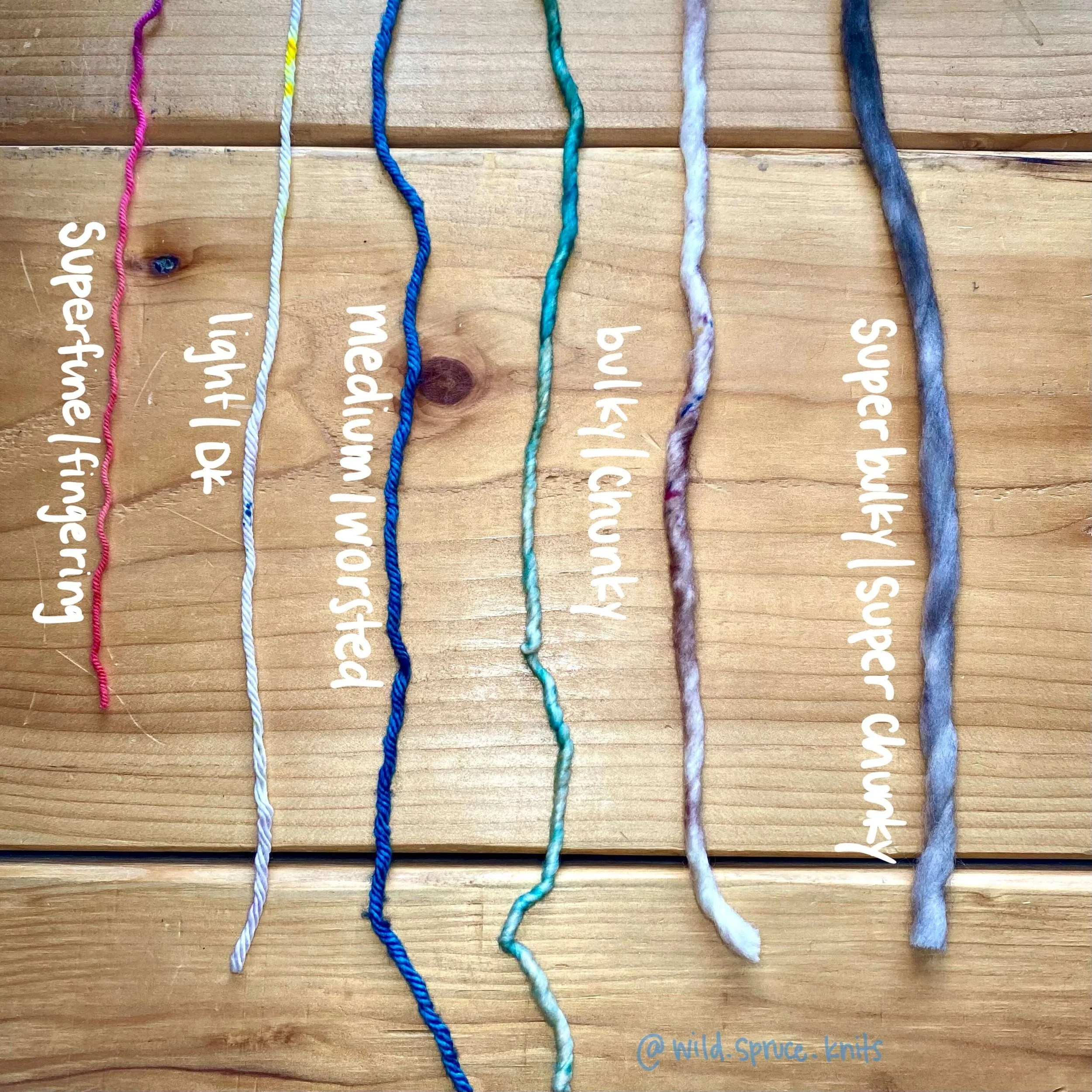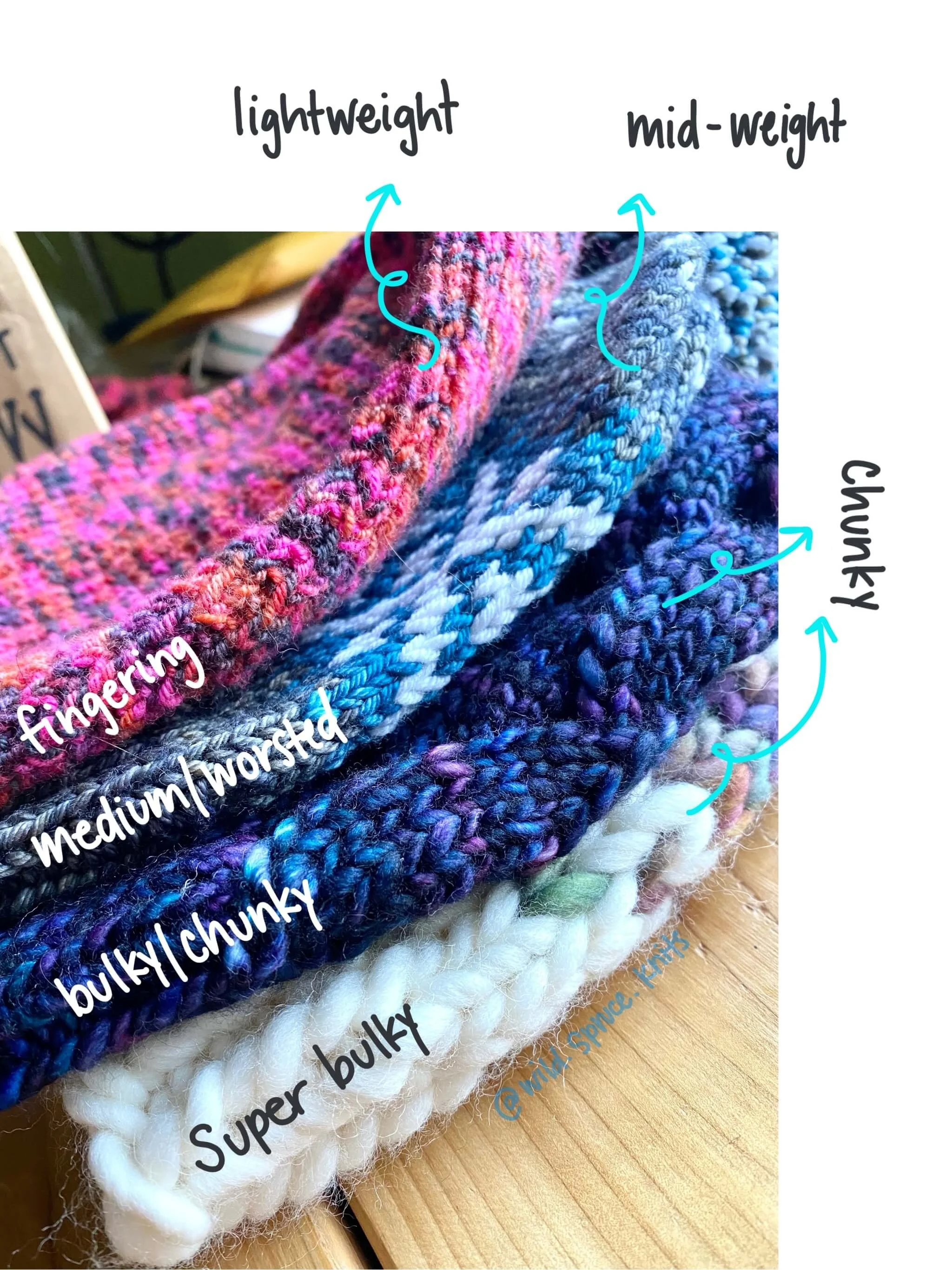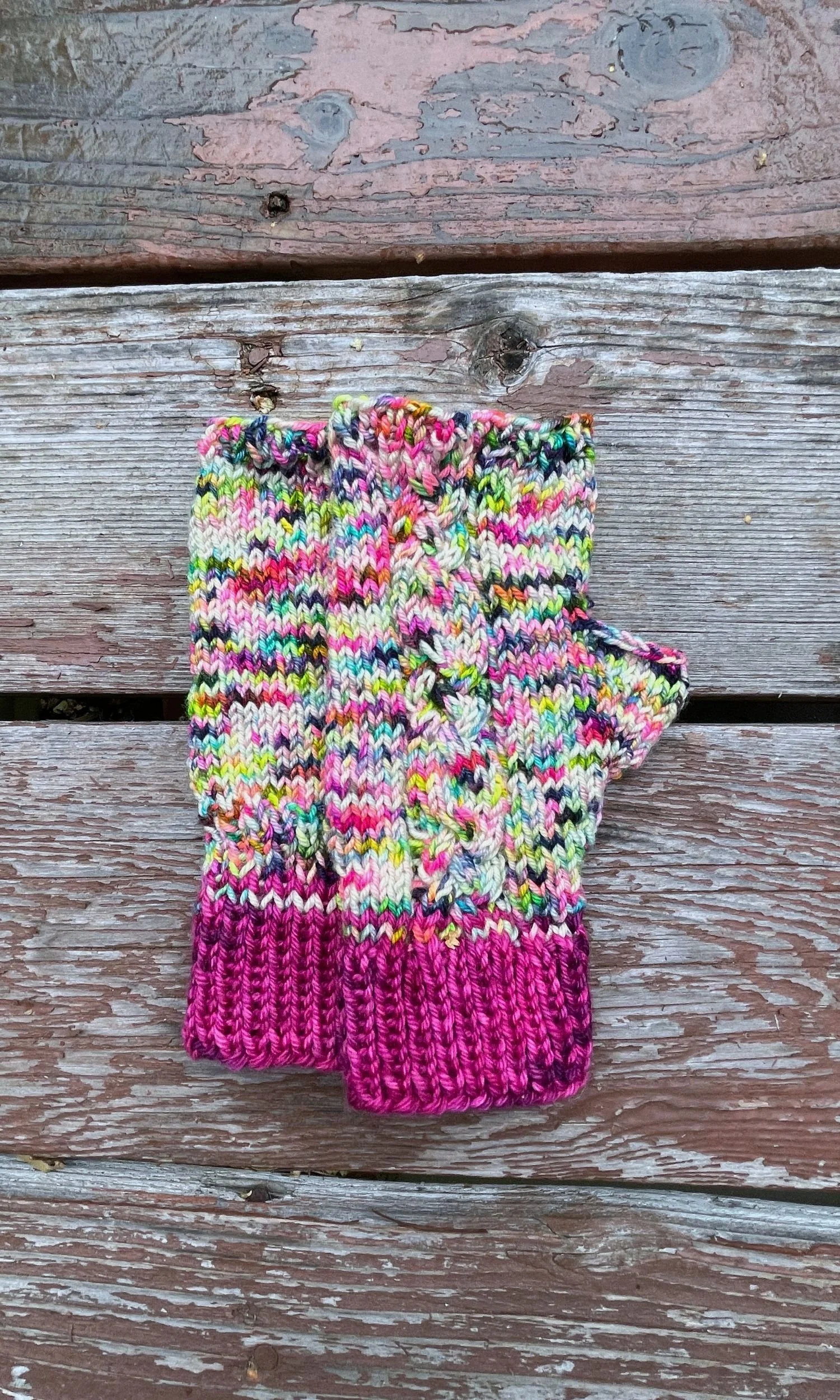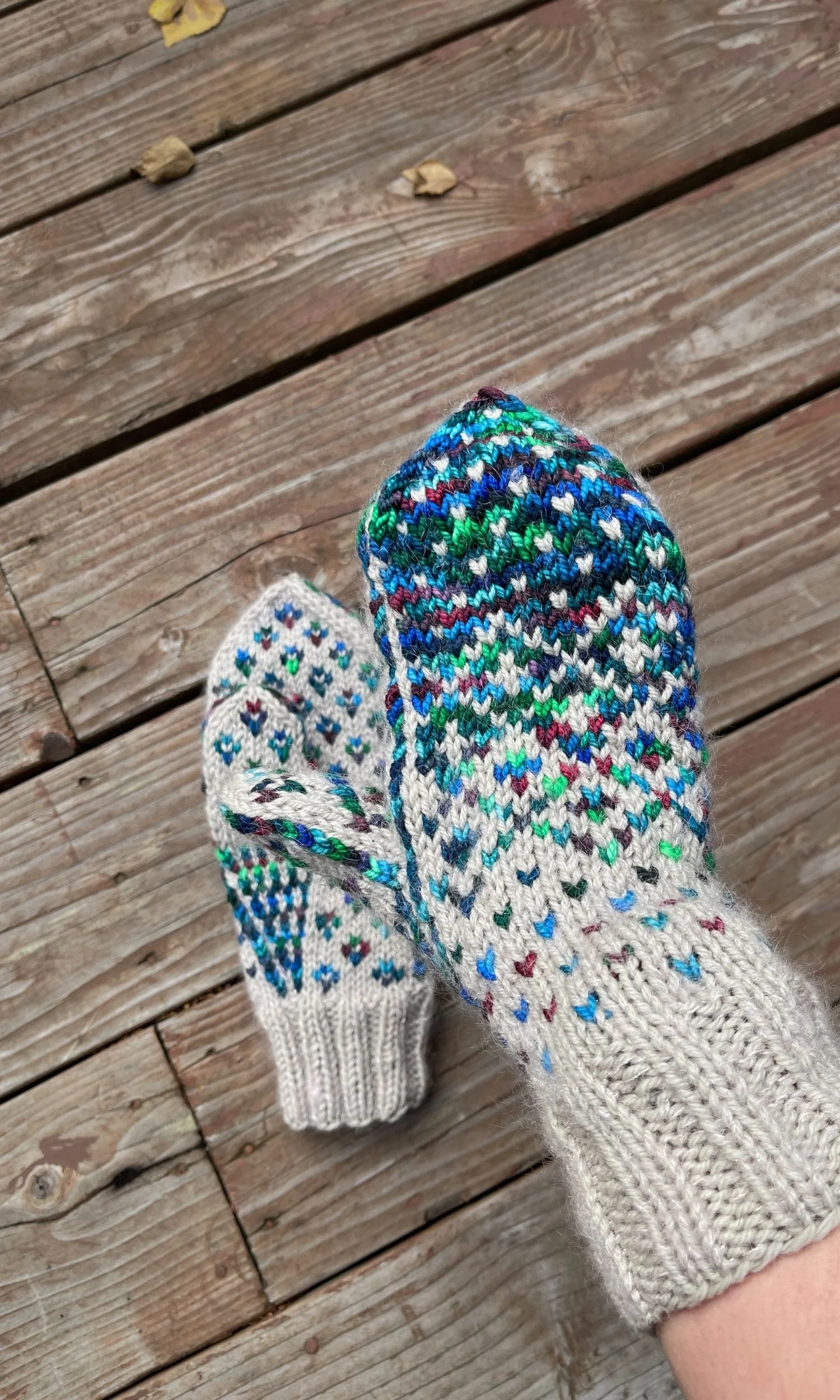What is Yarn Weight and Why Does it Matter?
If you’re not a knitter or someone who works with yarn regularly, you might not know the differences between the weights of yarn and how they impact the final object. I often describe my knitted objects in terms of weight (“chunky,” “lightweight,” etc.), but it can be hard to know what that means for the object you’ll ultimately hold in your hands.
The nitty gritty details of each type of yarn isn’t important if you’re not someone who makes things with yarn. But if you’re purchasing a handmade item, it can be difficult to tell what exactly the item will feel like just from looking at it. The difference between something that is made with super chunky or thicker yarn compared to something that is made with much thinner or finer yarn might be easy to spot via a photo, but there’s a lot of room for variation in between those extremes that might not be as easy to see.
I have been a knitter for most of my life, but I have only recently had to use written words to convey what the knitted items I make feel like in your hands. It’s challenging, which is why I thought it would be a good idea to standardize the way I describe the weight of my items and create a resource (this post!) to help my customers understand what I mean when I say “mid-weight” or “bulky” in an item description.
What is Yarn Weight?
Yarn weight refers to how thick a yarn is. Heavier yarns are thicker than lighter yarns.
For people who make things with yarn, having a standardized way to talk about it is important for making sure you get the right kind of yarn for a project. If you’re following a pattern, there is a recommended weight of yarn, and if you pick something that is very different than what is recommended, your project will not turn out right!
The finest (thinnest) yarn is lace weight and the thickest is jumbo. Everything in between is categorized into one of the other five weight categories - superfine/fingering, fine/sport, light/DK, medium/worsted, bulky/chunky, super bulky/super chunky.
How Yarn Weight Impacts Finished Garments
In general, the thicker the yarn, the thicker the finished object. There will be some differences in the way the finished fabric feels based on the needle size used or how tightly it was knit.
When knit with the appropriate sized needles, a hat made with chunky/bulky yarn will feel very thick and fluffy. It is also very warm. A hat made with light or medium yarn will be thinner and slightly less warm.
Lace
Lace weight yarns are made for…making lace.
Superfine
Superfine yarns includes yarns that are often referred to as sock or fingering yarns. These made a lightweight fabric that is perfect for socks, lightweight sweaters, scarves, hats, etc. A superfine weight hat or scarf/cowl would be perfect for your summer adventures (especially if you live in a place where it can get chilly in the evenings).
Fine
These yarns are often referred to as sport weight. They are a bit thicker than superfine/fingering, but still create a nice lightweight fabric. Many yarns that are specifically created for making baby items are sport weight.
Light
Yarns in this category are noticeably thicker than the previous category, but still create a lighter weight fabric. I often think of this and medium weight yarn as “all season” yarn for accessories like hats, cowls, and mittens. They are warm enough to stand up to cold winter temperatures, but still lightweight enough to be comfortable in the warmer months (depending on where you live…). I consider this category and the medium yarn category to be “mid-weight.”
Medium
Yarns in this category (worsted and aran weight) are probably the most common in most yarn stores. This category falls squarely in the “mid-weight” category for me and I like it for things that can be worn in all seasons.
Bulky
Bulky/super chunky yarns make even thicker more squishy items. Many people who make knitted items to sell prefer this category of yarn because it knits up quickly. This is the thickest yarn that I enjoy working with and I don’t often wear items made with this category because they are simply too warm for me (I tend to run warm)!
**In the photo above there are two examples of this weight of yarn. This isn’t a perfect classification system and there is variation within each category. This doesn’t have a huge impact on the finished items, but makes a big difference for those who are working with these yarns.
Super Bulky
Super bulky/chunky yarns make nice thick, squishy items. I rarely work with this weight of yarn, but it does make for some very nice finished items that are quick to make.
My Classification for Finished Items
Below is how I refer to the weight of the items that I sell and how they translate into the categories I mentioned above.
Lightweight = superfine/fine
Mid-Weight = light/medium
Chunky = bulky/super bulky
Check out these items from the Wild Spruce Knits Shop!

